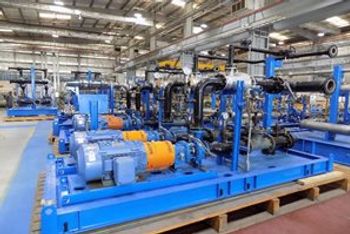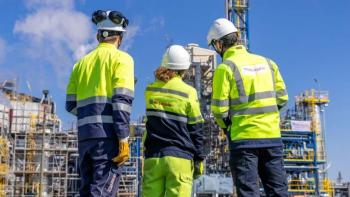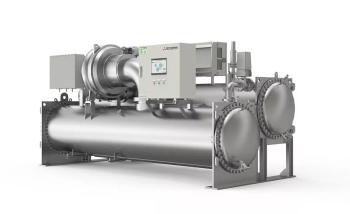
Everllence Launches New Dual-Fuel, Two-Stroke Ammonia Engine
Key Takeaways
- Everllence's ME-LGIA engine uses ammonia, offering zero CO2 emissions and advanced safety features, supporting the maritime industry's green transition.
- The engine's digital connectivity enhances performance and sustainability through real-time data flow and remote assistance.
Separate from liquid ammonia operation, the ME-LGIA also sends real-time engine and operational data to Everllence shore-based monitoring to improve performance.
At a maritime-based, two-day event in Copenhagen, Everllence launched its new, dual-fuel
“As the maritime industry’s leading engine designer, we are in a position to advance the green transition and know that bringing new fuels to market is imperative for zero-carbon shipping,” said Dr. Uwe Lauber, CEO of Everllence. “In this context, ammonia is a vital piece of the puzzle. The development of this engine is not just a technical achievement; it is another concrete step towards a climate-neutral future where the time to act is now.”
The engine’s digital connectivity provides secure and reliable data flow from maritime vessels to Everllence shore-based monitoring, allowing the use of real-time engine and operational data to enhance performance, deliver remote assistance, and help shipowners operate more efficiently and sustainably. Data-driven insights will support decarbonization as new fuels, like ammonia, permeate the market.
According to Everllence, the full ME-LGIA sales release will initially contain G50, S50, S60, G60, G70, and G80 bore sizes, with retrofit options made available in the future. The engine maintains many of the same benefits as Everllence’s current ME-LGIM and ME-LGIP units that operate with methanol and LPG, respectively. Everllence is engaged in several pilot projects, including two very-large ammonia carriers for Eastern Pacific Shipping; four engines for Höegh Autoliner Pure Car and Truck Carriers; and one bulk carrier in
“This ammonia engine is the result of over 150,000 hours of collective work and represents a significant financial investment on our part,” said Bjarne Foldager, Head of Two-Stroke Business, Everllence. “Since two-stroke engine testing on ammonia started in July 2023, we have carried out over 800 tests—both here in Copenhagen and at MITSUI E&S in Japan. Safety has been our first consideration, and we have worked closely with the relevant authorities and classification societies to ensure that the technology meets all demands. Combined with the knowledge we will gather from the pilot-projects, we are confident that this approach will deliver the standard in ammonia engines with a final design based on operational experience.”
Ammonia features several characteristics that make it suitable for deep-sea shipping decarbonization, such as:
- Lower emissions profile than traditional fossil fuels with zero CO2 output and reduced SOx and particulate emissions.
- High volumetric energy-density allows for more compact fuel storage as a liquid at moderate pressures, enabling simpler bunkering compared to cryogenic fuels.
- High thermal-efficiency lowers operational costs while maintaining power output.
- Slow combustion rate makes ammonia especially suitable for two-stroke marine engines, aligning with this design’s low piston speed.
S90 Methanol Retrofit
In late October 2025, Everllence successfully converted its
The full-scope project included engineering, project management, installation, commissioning, and sea trials. Prior to the official methanol retrofit, Everllence invested in a dedicated 4S90 testbed engine in Japan which was commissioned in early 2025. The testbed validated the engine’s methanol performance under real operating conditions.
Newsletter
Power your knowledge with the latest in turbine technology, engineering advances, and energy solutions—subscribe to Turbomachinery International today.





